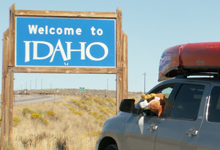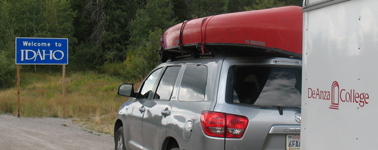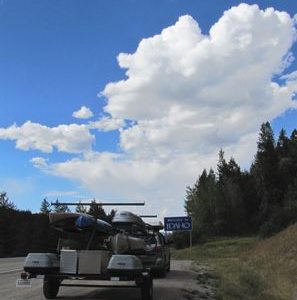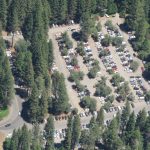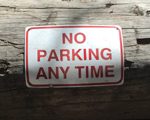The De Anza College Outdoor Club doesn’t provide rides, and the club and the college are not responsible for getting people to and from events, or for arranging a ride for anybody. This is because the college could be held responsible if someone had an accident.
Renting a bus for a large group has never worked out, because the cost turns out to be too high,
and people have too many different schedules.
I don’t have a car… OR … my vehicle barely makes it to school and back, how can I get to the trip?
you have a few choices:
1) Talk Mom and or Dad into loaning you the family van / SUV. Wow, will you be popular!
(Be sure you can get the van and it is running reliably before you promise rides to people!!!)
2) Talk a friend who can drive into going on the trip.
Experience shows that people who are thinking about going on a trip and don’t sign up until the last minute are less likely to find a ride than people who are actually signed up, or at least have made a commitment to go.
It could be that people who have made the commitment to go on a trip are more motivated.
They read all the details about a trip, become experts and can tell friends / classmates all about the trip.
For the Yosemite trip, some people make reservations in advance for more than one type of overnight accommodation that could accommodate 2 or 3 or 4 people. Then they start talking to classmates about the trip and can say they have a reservation for, for example:
a low-cost heated tent cabin (wood floor, canvas roofed and sided) with restroom nearby
AND
at the Yosemite Lodge hotel, a “Bunkbed Room” 1 Queen Bed and 1 Bunk Bed with an upper twin / lower double bed. Each of this room type has a bathroom, big screen TV, a small dining table and either a balcony (upstairs in a 2 story building with no elevator) or a patio (downstairs). Free (but not always reliable at any hotel in Yosemite) WiFi.
They can change their minds and cancel the reservations and get their full deposit back if they keep the deadline to cancel in mind (seven days before?).
They attend pre-trip in person meetings, invite friends to pre-trip meetings to get questions answered and it turns out that someone they know is going and can drive.
3) Rent a car. (BUT if you rent a car for the winter Yosemite trip, be sure the rental agency allows you to put snow chains or cables on it. AND figure out in advance where you will get chains for it.)
Making plans in advance is best, but also:
4) People signed up for the trip can exchange phone numbers and put carpools together.
When people sign up for trips there is a space on the form to say whether or not they will drive or need a ride and whether their email/phone number can be given to other people on the trip. Someone with motivation (they need a ride) or spare time then can call people and try to make arrangements. By having larger carpools everyone can save money on gas and any park entrance fees.
5) For some trips we have a mandatory pre-trip meeting. People without rides (and/or overnight accommodations) at that point can get together after the meeting to try to make ride arrangements.
Below: a rental car on a Grand Tetons trip with kayaks loaded on top and the stuffed Bullwinkle-the-moose trip mascot. Bullwinkle driving on the 2007 trip, ladies happy to be leaving Nevada / entering Idaho, and Bullwinkle driving again on the 2008 trip.
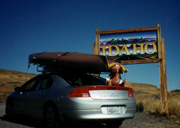
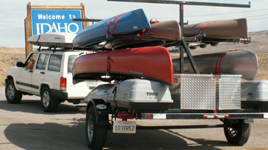
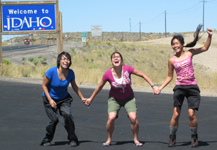
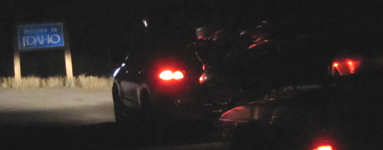
How many vehicles and how many people in each vehicle?
It is wise to have more drivers / vehicles than it seems as though the group initially needs. There are often late signups who need a ride.
Backup vehicles & drivers may be needed at the last moment. (Parents sometimes change their minds and decide to not loan the family van / SUV after all. A vehicle can have unexpected engine trouble.)
On a camping trip, especially on our winter trip or the long distance trip to Grand Teton National Park, you’ll be bringing a lot of gear, so 4 people should be the limit in a 5-passenger SUV, 3 people should ride in a sedan that seats four, and some cars really should only have 2 people. You will have more fun if you can bring enough ice chests, a large backpack for all-day-long hikes that has room for your raingear, warm layers to put on and off, cameras, 2 or 3 lunches, etc. (instead of a small day pack). If you camp you will need not only your stove, cooking gear, tent and sleeping bag, but also at least 2 insulating sleeping pads per person, even in the summer.
You really do not want to drive 1,000 plus miles to Grand Teton National park with gear on each person’s lap.
De Anza wants you to have insurance, properly functioning seatbelts for all passengers, and not so much gear in the car that it blocks your view out the back window.
What if there isn’t room for all the gear?
Rethink well in advance that you can stuff so many people and all their gear in the vehicle. If someone you might give a ride to can drive, they should be encouraged to do so, to make more room for people, or as a last minute back-up.
Sometimes people rent a small enclosed trailer or borrow a cartop carrier. On a Yosemite trip a woman borrowed her brother’s hard-sided Yakima cartop pod, but ooooops, he didn’t tighten it far enough when he installed it and it slid around on the drive. A trip member was able to figure out and correct the problem when she got to the campground, but it caused more than a bit of concern during the drive.
Sometimes a car teams up with a truck. Then the car can seat more people because the truck can fit their gear. (Be sure anything in the back of a truck is packed in waterproof plastic in case of rain.) Don’t leave a truck unattended with all those tempting bags in it.
If you stop at a hotel overnight on the way to Grand Teton National park, all the gear in the truck bed or on a not-completely-lockable cartop carrier needs to go into the hotel room. People have had bikes stolen even though the bikes were padlocked and cabled / chained to the bike rack.
When you arrive in a park like Yosemite, especially after dark, make getting all food and toiletries out of the truck bed into a food locker a first priority and leave someone in the back of the truck until that is done. (Raccoons move quickly and have gotten into trucks and into gear when people ignored this advice.)
The people in a truck / sedan combo can divide park entrance fees and gas by arrangement in advance. (If the truck seats three, but the car can seat six with their gear in the truck, it would be fair for the people in the car to pay part of the trip costs for the truck.)
When will carpools leave?
This is frequently not completely decided until near the date of the trip.
On a typical weekend trip, like a winter Yosemite trip, for example, cars left the Bay area at 5:30 a.m., 8 a.m., 9 a.m., noon, 1:30, 2:30 and 5 p.m. People got rides depending on when they had classes or work. Some carpools left at the same time from the same place so they could caravan together and watch out for each other. Plus, it can be fun to trade around passengers as you go and get to know new people.
Most people return on the Sunday afternoon of a weekend trip, but some may stay until very late in the day. Sometimes people need to get to work and leave quite early on the Sunday. Some leave their return time open until that day. There is often no way to predict until near the trip date or on the trip. If you are getting a ride and have a must-return time, be certain to tell your driver well in advance.
As for out of state road trips like the Grand Teton National Park trip, it can be quite different. Well before a trip, the various people who say they really want to go are not sure how long of a trip they will make it into. Some will go for under a week, some may decide that as long as they are going that far, they want to make a three week long adventure to 6 or 8 western National Parks out of it. Decisions are often made quite near the trip date.
(Form your carpools off campus. Spare cars that are left parked on campus over a weekend have been trashed!)
How can people still be friends after sharing a ride on a trip?
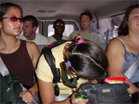
When it is really windy outside, if everybody opens their doors at once, or even if more than one door or one door and the hatchback is opened, everything inside will blow around and even out of the vehicle and you could be chasing stuff for miles.
This really happened:
A guy didn’t make arrangements for a ride, he just showed up when carpools met to leave and figured there would be room for him (oh, and he had a bike he wanted to bring and a bunch of food that needed refrigeration, and he figured someone would have room for it in their ice chest). – – –
You might guess he did not get a ride to go on the trip.
See more at Camping Blunders
_______________________
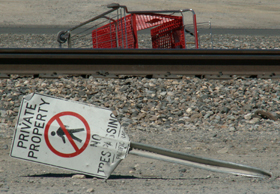
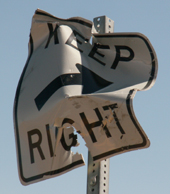
For road trips, we advise people to check everything that
powers,
stops,
cools,
heats,
ventilates
and lights their vehicle
well before they leave on an adventure.
Road trip vehicle prep and recommended service has checklists and things people can do without a mechanic.
Drivers and passengers might also want to read
How to not collide with a deer,
Safe driving in rain and fog,
Prepare for winter driving,
wildlife jams,
_________________________________________________________________
![]()
Top reasons not to speed in a National Park has defensive driving advice.
____________________________________________________________________
You can find the instructions to turn off the loud beep your car makes when you use the keyless ‘remote’ pushbutton on your keychain to unlock the car. Then you won’t forget about it and wake up everyone in nearby campsites / cabins in the middle of the night. If you can’t disable it, take the remote off your keychain and put the remote away somewhere and use the key to unlock the vehicle during the trip.
If your trunk beeeeps when you open it you need to take it to the dealer to get it silenced, or figure out how to silence it yourself, or not drive that vehicle, or park it away from the campsite / at the very back of a lodging parking lot.
_______________________
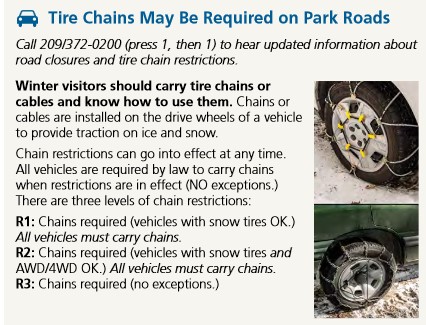
Every vehicle on a winter trip (or sometimes even spring / fall) to Yosemite must have chains, often even for four-wheel drive vehicles with snow tires. The park requires you at least carry chains for a lot of the fall/winter/spring, even if there is no snow currently on the ground. Big fines apply to people who ignore this, and they might check for chains as you try to enter the park, and not let you in without them.
since most car rental companies do not let people put snow chains of their vehicles, so it is not a great idea to rent a car for our winter Yosemite trips, UNLESS you verify that they will allow you to use tire chains or cables (and maybe find a rental car that includes tire chains in the winter).
For the between-summer-and-fall-quarter trip to Wyoming and Grand Teton National park, most people bring their chains or cables just in case.
At the snow chain rentals page you will read that snow chains do not fit on some vehicles. If you have aftermarket wheels and big fat tires you might not be able to fit chains on them, as there will not be enough space in the wheel well. Some models don’t have enough clearance between the tire and the suspension, even without bigger wheels/tires. Some manufacturers don’t recommend chains or any other traction device.
_______________________________
Transporting a single kayak? Read loading a kayak on a car .
Please note that if you fly into Grand Teton park for our trip there and rent a vehicle, the rentals companies will not let you put a canoe on top of their vehicles.
_______________________________
The Grand Teton National park between-summer-and-fall-quarter trip has a trip transportation page with route advice that can save you hours of driving and includes notes about 87 versus 85 octane gas.
_______________________________
See details about (day-use parking) parking in Yosemite without an overnight accommodation and the sometimes designated overnight parking available at overnight accommodations Parking and Traffic Jams in Yosemite Valley Tips and Tricks.
_______________________________
For details about De Anza Outdoor Club events and on how to find us to pay for a membership, sign up for events or volunteer, go to:
Outdoor Club Coming Attractions
